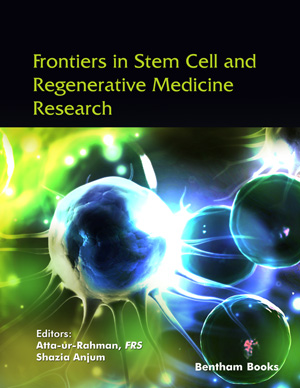Abstract
Parkinson's disease (PD) is a common, progressive neurodegenerative disorder characterized by substantia nigra dopamine cell death and a varied clinical picture that affects older people. Although more than two centuries have passed since the earliest attempts to find a cure for PD, it remains an unresolved problem. With this in mind, cell replacement therapy is a new strategy for treating PD. This novel approach aims to replace degenerated dopaminergic (DAergic) neurons with new ones or provide a new source of cells that can differentiate into DAergic neurons. Induced pluripotent stem cells (iPSCs), mesenchymal stem cells (MSCs), neural stem cells (NSCs), and embryonic stem cells (ESCs) are among the cells considered for transplantation therapies. Recently disease-modifying strategies like cell replacement therapies combined with other therapeutic approaches, such as utilizing natural compounds or biomaterials, are proposed to modify the underlying neurodegeneration. In the present review, we discuss the current advances in cell replacement therapy for PD and summarize the existing experimental and clinical evidence supporting this approach.
Graphical Abstract
[http://dx.doi.org/10.1111/jnc.13691] [PMID: 27401947]
[http://dx.doi.org/10.1007/s40495-019-00191-8]
[http://dx.doi.org/10.1111/febs.12335] [PMID: 23663200]
[PMID: 24312782]
[http://dx.doi.org/10.1515/revneuro-2017-0040] [PMID: 29305570]
[http://dx.doi.org/10.1016/j.pneurobio.2015.07.002] [PMID: 26209473]
[http://dx.doi.org/10.1016/j.parkreldis.2015.09.028] [PMID: 26411502]
[http://dx.doi.org/10.1016/j.brs.2019.06.012] [PMID: 31217080]
[http://dx.doi.org/10.1038/mt.2013.281] [PMID: 24356252]
[http://dx.doi.org/10.1002/ana.20737] [PMID: 16429411]
[http://dx.doi.org/10.3233/JPD-150630] [PMID: 26406122]
[http://dx.doi.org/10.1016/j.tips.2009.03.001] [PMID: 19362379]
[http://dx.doi.org/10.1002/0470870834.ch2]
[http://dx.doi.org/10.1007/s12015-016-9716-y] [PMID: 28064388]
[http://dx.doi.org/10.1073/pnas.97.25.13877] [PMID: 11106399]
[http://dx.doi.org/10.1001/archneur.1989.00520420033021] [PMID: 2786405]
[http://dx.doi.org/10.1056/NEJM199504273321702] [PMID: 7700284]
[http://dx.doi.org/10.1126/science.2105529] [PMID: 2105529]
[http://dx.doi.org/10.1016/j.neurop.2021.07.006]
[http://dx.doi.org/10.1016/j.stem.2008.11.013] [PMID: 19097959]
[http://dx.doi.org/10.1016/j.stem.2009.05.015] [PMID: 19497275]
[http://dx.doi.org/10.1093/cercor/bhj167] [PMID: 16766697]
[http://dx.doi.org/10.1038/nature00870] [PMID: 12077603]
[http://dx.doi.org/10.1089/scd.2007.0036] [PMID: 18047393]
[http://dx.doi.org/10.1016/j.exphem.2004.04.001] [PMID: 15246162]
[http://dx.doi.org/10.1186/1741-7015-10-1] [PMID: 22216957]
[http://dx.doi.org/10.1016/j.neulet.2004.01.073] [PMID: 15050721]
[http://dx.doi.org/10.1073/pnas.0712359105] [PMID: 18305158]
[http://dx.doi.org/10.1172/JCI21137] [PMID: 15630449]
[http://dx.doi.org/10.1038/nature00900] [PMID: 12077607]
[http://dx.doi.org/10.1634/stemcells.2004-0094] [PMID: 15579643]
[http://dx.doi.org/10.1634/stemcells.2007-0494] [PMID: 17951220]
[http://dx.doi.org/10.1634/stemcells.2005-0393] [PMID: 16556709]
[http://dx.doi.org/10.1634/stemcells.2007-0996] [PMID: 18388307]
[http://dx.doi.org/10.1056/NEJM200103083441002] [PMID: 11236774]
[PMID: 26568701]
[http://dx.doi.org/10.1016/j.stem.2016.09.004] [PMID: 28094017]
[http://dx.doi.org/10.1016/j.stem.2021.01.004] [PMID: 33545080]
[http://dx.doi.org/10.1016/j.biocel.2018.12.008] [PMID: 30557622]
[http://dx.doi.org/10.1016/j.cell.2008.07.041]
[http://dx.doi.org/10.1016/j.cell.2009.02.013] [PMID: 19269371]
[http://dx.doi.org/10.1073/pnas.0801677105] [PMID: 18391196]
[http://dx.doi.org/10.1073/pnas.1010209107] [PMID: 20798034]
[http://dx.doi.org/10.1089/scd.2009.0319] [PMID: 19824823]
[http://dx.doi.org/10.3892/br.2018.1049] [PMID: 29564126]
[http://dx.doi.org/10.1002/stem.499] [PMID: 20715183]
[http://dx.doi.org/10.1016/j.celrep.2013.02.016] [PMID: 23499447]
[http://dx.doi.org/10.1016/j.stem.2015.01.018] [PMID: 25732245]
[http://dx.doi.org/10.1038/nature23664] [PMID: 28858313]
[http://dx.doi.org/10.1038/s41591-021-01257-1] [PMID: 33649496]
[http://dx.doi.org/10.1172/JCI130767] [PMID: 31714896]
[http://dx.doi.org/10.1056/NEJMoa1915872] [PMID: 32402162]
[PMID: 31911652]
[http://dx.doi.org/10.1073/pnas.97.23.12846] [PMID: 11070094]
[http://dx.doi.org/10.1038/3473] [PMID: 9831031]
[http://dx.doi.org/10.1126/science.287.5457.1433] [PMID: 10688783]
[http://dx.doi.org/10.1016/S0092-8674(02)00862-0] [PMID: 12202033]
[http://dx.doi.org/10.1016/j.neuint.2017.02.006] [PMID: 28219641]
[http://dx.doi.org/10.1016/j.stemcr.2015.09.008] [PMID: 26489892]
[http://dx.doi.org/10.1073/pnas.0704091104] [PMID: 17586681]
[http://dx.doi.org/10.3390/ijms18010224] [PMID: 28117752]
[http://dx.doi.org/10.1016/S0165-0270(03)00007-4] [PMID: 12706848]
[http://dx.doi.org/10.1002/stem.2616] [PMID: 28328168]
[PMID: 30956647]
[http://dx.doi.org/10.1002/stem.2827] [PMID: 29575325]
[http://dx.doi.org/10.1172/JCI200420935] [PMID: 15199405]
[http://dx.doi.org/10.4049/jimmunol.179.3.1549] [PMID: 17641021]
[http://dx.doi.org/10.1039/C7NR06976F] [PMID: 29372743]
[http://dx.doi.org/10.1186/scrt213] [PMID: 23739590]
[http://dx.doi.org/10.3390/ijms21218060] [PMID: 33137927]
[http://dx.doi.org/10.1016/S0304-3940(01)02384-9] [PMID: 11742717]
[http://dx.doi.org/10.1016/j.trsl.2009.07.006] [PMID: 20129486]
[http://dx.doi.org/10.1186/1741-7015-9-50] [PMID: 21569273]
[http://dx.doi.org/10.1016/j.brainres.2009.11.041] [PMID: 19945443]
[http://dx.doi.org/10.3727/096368912X640556] [PMID: 22546197]
[http://dx.doi.org/10.3390/cells8080886] [PMID: 31412678]
[http://dx.doi.org/10.1002/jnr.22435] [PMID: 20544825]
[http://dx.doi.org/10.1038/cddis.2015.327] [PMID: 26794657]
[http://dx.doi.org/10.1007/s00401-016-1605-6] [PMID: 27497943]
[http://dx.doi.org/10.1016/j.neurobiolaging.2014.01.028] [PMID: 24629674]
[http://dx.doi.org/10.1002/stem.2650] [PMID: 28580639]
[http://dx.doi.org/10.2174/187152711795564001]
[http://dx.doi.org/10.3390/cells10082045] [PMID: 34440814]
[http://dx.doi.org/10.1038/1105] [PMID: 10195162]
[http://dx.doi.org/10.1007/s12035-021-02603-7] [PMID: 34714469]
[http://dx.doi.org/10.3233/JPD-2011-11070] [PMID: 23933658]
[http://dx.doi.org/10.4103/1673-5374.264455] [PMID: 31535654]
[http://dx.doi.org/10.5966/sctm.2016-0071] [PMID: 28191785]
[http://dx.doi.org/10.1038/s41598-017-03592-1] [PMID: 28646200]
[http://dx.doi.org/10.3390/cells9020315] [PMID: 32012897]
[http://dx.doi.org/10.3389/fbioe.2019.00294] [PMID: 31737616]
[http://dx.doi.org/10.3389/fncel.2020.590960] [PMID: 33250716]
[http://dx.doi.org/10.1016/j.brainres.2019.146615] [PMID: 31863730]
[http://dx.doi.org/10.1002/sctm.18-0009] [PMID: 30238668]
[http://dx.doi.org/10.1016/j.biochi.2021.06.008] [PMID: 34182001]
[http://dx.doi.org/10.3389/fcell.2020.00086] [PMID: 32154247]
[http://dx.doi.org/10.1038/s41419-020-2473-5] [PMID: 32341347]
[http://dx.doi.org/10.1016/j.progpolymsci.2014.12.002]
[http://dx.doi.org/10.1016/j.ijbiomac.2021.01.006] [PMID: 33422514]
[http://dx.doi.org/10.1016/j.tibtech.2011.07.002] [PMID: 21831464]
[http://dx.doi.org/10.1016/j.biomaterials.2004.09.037] [PMID: 15621241]
[http://dx.doi.org/10.1016/j.nbd.2009.10.003] [PMID: 19822211]
[http://dx.doi.org/10.1038/srep42212] [PMID: 28169354]
[http://dx.doi.org/10.1515/biolog-2016-0056]
[http://dx.doi.org/10.3389/fnano.2021.643507]
[http://dx.doi.org/10.2147/IJN.S238266] [PMID: 32161459]
[http://dx.doi.org/10.2147/IJN.S120939] [PMID: 27994458]
[http://dx.doi.org/10.1016/j.biomaterials.2015.09.039] [PMID: 26454047]
[http://dx.doi.org/10.1016/j.msec.2019.03.024] [PMID: 30948095]
[http://dx.doi.org/10.1016/j.biomaterials.2016.06.016] [PMID: 27322960]
[http://dx.doi.org/10.3390/app112210727]
[http://dx.doi.org/10.1016/j.jneumeth.2017.12.003] [PMID: 29221639]
[http://dx.doi.org/10.1038/s41598-020-59310-x] [PMID: 32066745]
[http://dx.doi.org/10.1016/j.bbr.2014.07.037] [PMID: 25086269]
[http://dx.doi.org/10.1523/JNEUROSCI.1787-16.2017] [PMID: 29021297]
[http://dx.doi.org/10.1126/scitranslmed.3003391]
[http://dx.doi.org/10.1089/scd.2015.0394] [PMID: 27059007]
[http://dx.doi.org/10.1002/mds.25373] [PMID: 23390095]
[http://dx.doi.org/10.1016/j.reth.2020.06.002] [PMID: 33490319]











